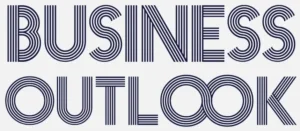In 1981, seven engineers reportedly pooled $250 to start a company in Pune. They named it Infosys, derived from “Information Systems,” likely unaware their venture would grow into a major global IT company. The Infosys logo, like the company, has evolved over time, reflecting changes in design trends and the company’s growth.
The visual identity of Infosys is often described as minimalist.
The Evolution of Infosys Logo

The Humble Beginnings (1981-1992)
How Infosys first presented itself to the world
The original logo was typical of its time:
- Classic serif font (common for serious businesses in the 80s)
- Deep blue color (showing trust and reliability)
- No fancy graphics (just straight-to-the-point text)
There was one small problem—the fancy letter details didn’t quite match Infosys’ growing reputation as a no-nonsense tech company. As they expanded globally, they needed a fresh look.
The Big Change (1992) – Simplicity Wins
Why Infosys redesigned its logo for the modern era
When India’s economy opened up in the 90s, Infosys did too. The new logo:
- Switched to a clean, modern font (easier to read worldwide)
- Brightened the blue (more energetic and forward-thinking)
- Added a hidden detail—the connected “f” (more on this later)
That tiny link between the “I” and “n” wasn’t a mistake—it was a smart design choice with meaning.
The Hidden Meaning in the Design
What most people miss about the Infosys logo
Look closely—there’s more than just letters:
- The “f” connects smoothly = linking ideas and technology
- Perfectly spaced letters = precision, just like their software
- Simple but strong = no unnecessary flash, just solid work
It’s a logo that doesn’t shout but still stands out.
Why Blue? The Psychology Behind the Color
How Infosys’ shade of blue builds trust
Not all blues are the same. Infosys’ choice:
- Professional but friendly (not as dark as IBM, not as bright as Facebook)
- Easy on the eyes (important for a company people work with daily)
- Works everywhere (from business cards to mobile apps)
Color matters more than we think—this blue says, “We’re serious, but we’re also easy to work with.”
The Logo’s Secret Geometry
The math hidden in plain sight
Good design follows rules—even if we don’t notice:
- The “O” is a perfect circle (not slightly oval like most fonts)
- Letters are spaced just right (following natural visual balance)
- Everything aligns perfectly (because details matter in tech)
This isn’t accidental—it’s intentional, just like Infosys’ approach to coding.
Going Global – How the Logo Adapted
Small tweaks for a worldwide audience
As Infosys grew, the logo evolved subtly:
- Dropped extra words (no need to explain—everyone knew the brand)
- Made it flatter and simpler (better for apps and websites)
- Kept the core the same (consistency builds recognition)
A great logo grows with the company without losing its soul.
Why This Logo Works So Well
Lessons for businesses building their brand
Infosys’ logo succeeds because it’s:
✅ Timeless (no trendy effects that age badly)
✅ Professional (perfect for a B2B tech company)
✅ Memorable (simple enough to stick in your mind)
Unlike flashy logos that try too hard, this one earns respect quietly—just like Infosys itself.
Final Thought: A Logo That Tells a Story
Great logos aren’t just pretty—they communicate values. Infosys’ blue wordmark says:
- We’re dependable (that steady blue)
- We pay attention to details (those perfect curves and lines)
- We think long-term (a design that still works after decades)
Next time you see the Infosys logo, look closer. There’s a lot more to it than just a name.





